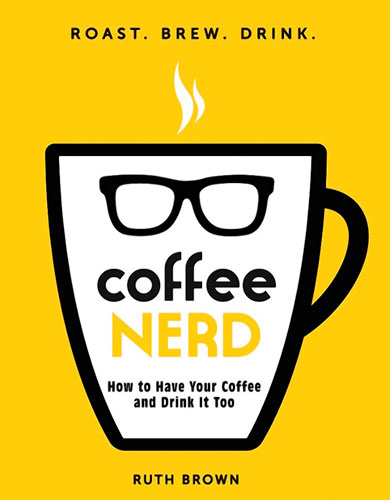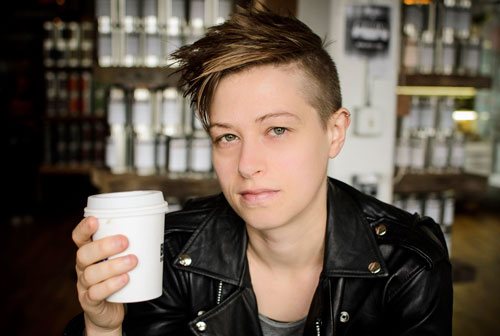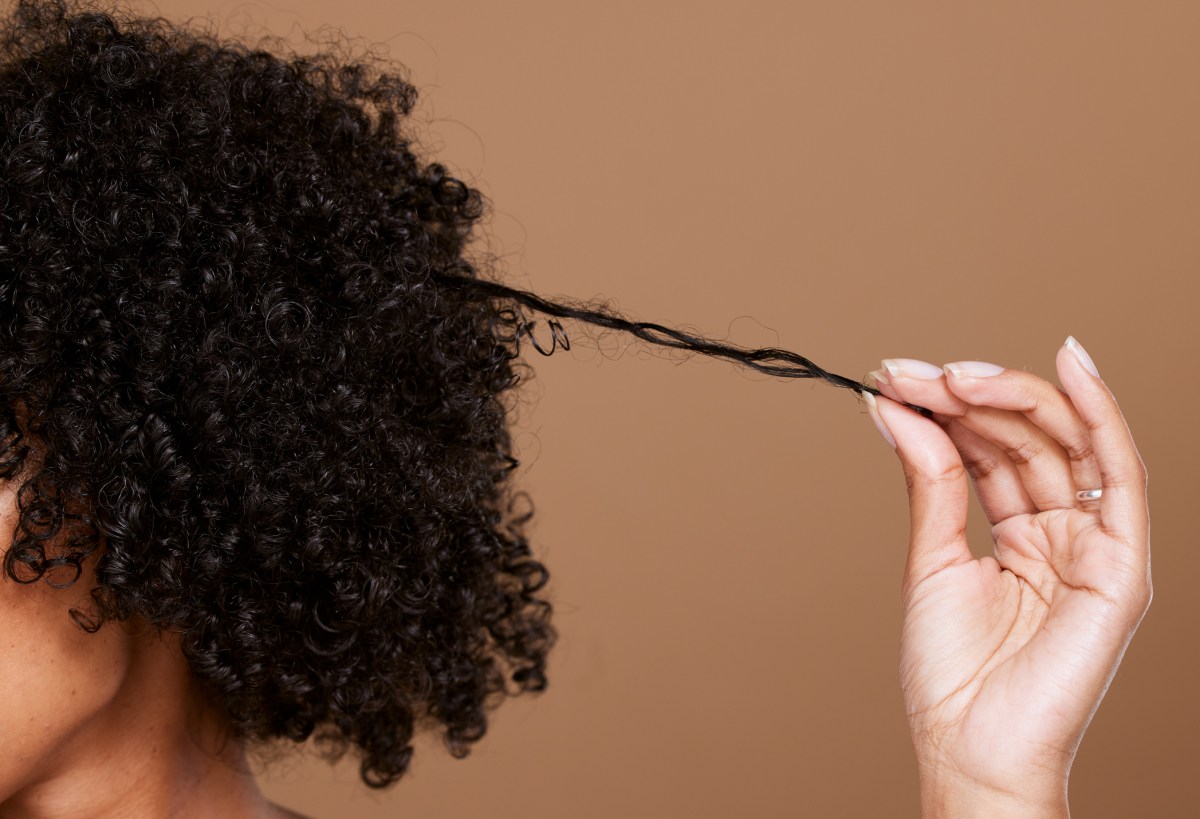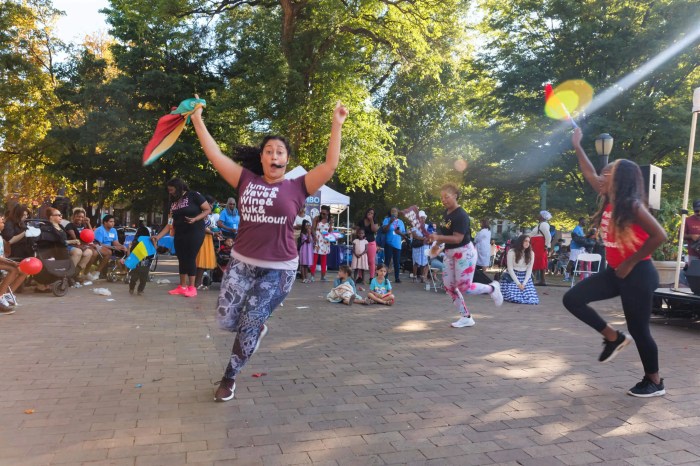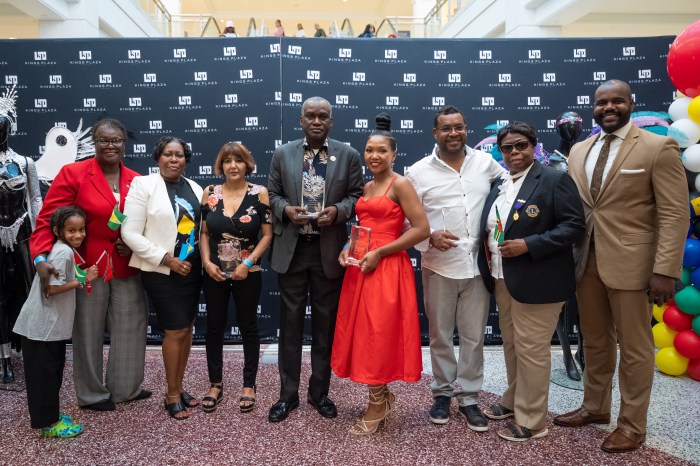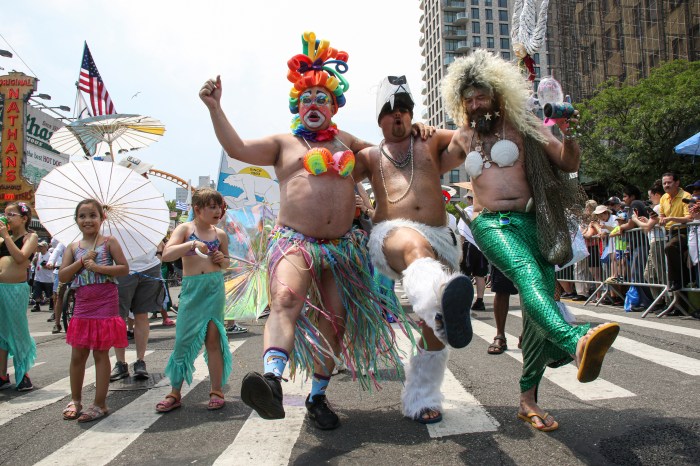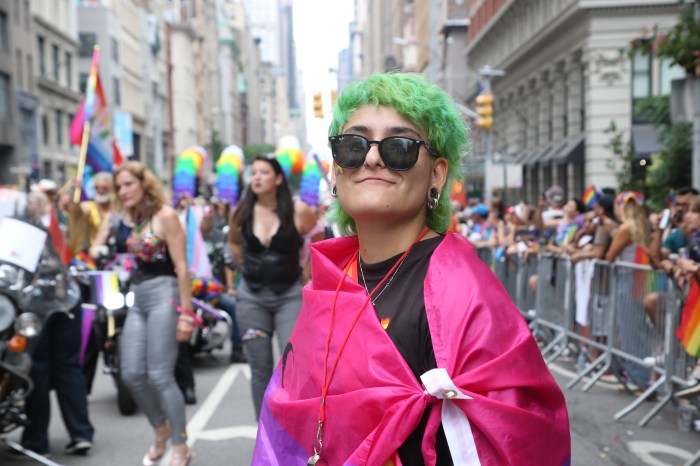Our readers may think that we in the editorial department at The Brooklyn Courier spend our meager spare time drinking ourselves into a stupor as we obsessively refresh our e-mail to see if we have received a response to that Freedom of Information Law request — and they wouldn’t be far off — but at least one member of the crew has been busy sipping a more stimulating beverage, and writing a book. Now all that responsibility-taking and hard work has paid off and arts editor Ruth Brown is officially a published author, with her book “Coffee Nerd” printed and ready to grace store shelves next week. The tome is an idiot’s guide to the “third wave” of coffee culture that is taking hold in Brooklyn. I pulled her away from the daily grind to learn more.
Nathan Tempey: Why is your book something Brooklynites need now?
Ruth Brown: New York was a little later to the third-wave coffee explosion than some other cities, but now there is some really great coffee coming in and out of Brooklyn. Probably more than anywhere, here you have roasters from all over the world.
You can get coffee from the West Coast. Blue Bottle and Stumptown have got roasteries here. Toby’s Estate, which is from Australia [Ed. note: So is Ruth], set up a roastery here. You’ve got places like Budin in Greenpoint who are importing super-freshly roasted, amazing coffee from Scandinavia. I don’t think anywhere else in the country would have the customer base to make the economics of that work.
If you want to appreciate that level of coffee and pay extra money for it, you should probably understand why you’re paying the extra money for it. And that’s where my book comes in.
NT: And is Brooklyn a hub of the citywide activity?
RB: There are some pretty good cafes and roasters running out of Manhattan —
NT: Sacrilege!
RB: That’s a fair comment. A lot of the best coffee is definitely in Brooklyn. I think it would be really hard to roast in a lot of Manhattan, so I assume not many people are doing it.
NT: One of the things that I got out of the book is that the time from the roasting to the brewing is the most important in terms of freshness.
RB: It is important.
NT: Should people be concerned if they go into a coffee shop advertising a West Coast roast?
RB: There are some places that do make a big deal out of having coffee from the West Coast. I know there’s a place called WTF in Fort Greene who are pretty nerdy — they get coffee in from Portland, from Coava. They’re a really good roaster and they take the shipping pretty seriously. Budin [in Greenpoint] as well, they get coffee in from Heart roasters in Portland, which is a really good Scandinavian-style roast. I’m sure they would be very finicky about it and ship very small quantities and use it pretty quickly.
I’m more cautious about it when it’s grocery stores. That’s where you tend to get old beans being sold.
NT: In the book it sounds like you’re arguing that there’s been a seismic shift in the coffee industry.
RB: I don’t know if I’d say there’s been a seismic shift because in the late ’70s and ’80s what you saw pre-Starbucks was a similar thing, in terms of focusing on the quality and the artistry and the origins. And then it went a bit nuts and started to shift more towards the Frappuccino stuff. So in a way it’s almost an extension of that, just taken more nerdy and more extreme.
NT: Is specialty coffee something that the casual consumer is going to see infiltrating the coffee-shop around the corner from her house?
RB: Oh, sure. Starbucks actually has a non-Starbucks-branded cafe in Seattle where they do more cool techniques. And they did bring in pour-over filters to a lot of their stores, though I don’t think it ever took off. They brought in that blonde roast. They were the ones who popularized that super-dark roast and got everybody drinking it. The blonde roast is a reaction to that lighter style of roasting that is more popular now. The idea behind that style of roasting is that you can actually taste the provenance, the distinctive features of the beans.
Starbucks just started selling flat whites, and I think that is mostly because it’s associated with a lot of the cooler third-wave coffee shops. Probably because a lot of them are either run by Australians or they picked it up from the ones that are. And then the media started writing about it a lot. So serving a flat white became a kind of signifier [of cool].
NT: On the subject of exotic coffee trends, the thing in your book I was most surprised by is the kopi luwak phenomenon. Can you explain it?
RB: Oh, man. In Indonesia and the Philippines, civet cats eat coffee beans that are discarded and they s— them out and people roast those beans and make coffee. They developed a reputation for being a delicacy. The idea was that the cats only select the best and ripest beans to eat and there is some enzyme in their stomach that does something to the beans that makes them special. They became one of those early viral topics in the West — cat-poop coffee and how rare it was. Because of the lack of product — you have to feed the cherries to the cats and then wait for them to s— out the beans — and because of the buzz around it, it became very expensive.
A lot of people started to create farms because if you want to do this in the wild you have to follow civet cats around and pick up their s—. It’s not a very productive way of making coffee. So people created horrific farms to force-feed the civets the coffee cherries. A British TV station did a pretty horrific expose of it. And most reports said that the vast majority of stuff that said it was kopi luwak wasn’t actually kopi luwak. But when it reached a fever point there were places charging 20 bucks a cup.
Increased scrutiny shamed people into not selling it. And quite a few people tried it and said it was not good.
NT: You don’t think we’re in danger of having a groundswell of people doing it in their apartments with their house cats?
RB: I don’t think other cats would eat coffee cherries. And it’s pretty hard to get coffee cherries outside of coffee-producing countries. So, no, on practicality alone.
NT: As far as horrific stuff goes, you did a pretty good job of not glossing over all of the economic exploitation and slavery and environmental degradation that goes into making coffee, while also not having it overtake the rest of the book. How did you strike that balance?
RB: I’m glad to hear that I did strike the balance. It was a hard part. Most of the books I read in research tended to be only about that or barely mention it. It’s one of those things that comes and goes in trends, when we think about where our food comes from, or where our clothes come from.
There’s no point in glossing over slavery, because it’s a big part of the story, as with sugar and a lot of commodities.
In terms of modern stuff, I was blunt about it and there was one bit where I said, ‘Look, you’re an a—— if you don’t care about this stuff, but I can’t force you to care about it.” What more can you say? “You should give a s—?” Most people care more about price than labor, I think.
NT: Do you mind briefly summarizing your defense of the $8 cup of coffee?
RB: Sure. I understand why people are like, “Screw fancy coffee. I think coffee should cost 80 cents from my guy in the kiosk.”
I think, as with anything in the First World, if it’s cheap, somebody else is paying that expense somewhere along the time. The coffee is 80 cents because the farmers who made it were horribly exploited. They probably did a decent amount of damage to the land growing that coffee. The person selling it to you may not have health insurance. It’s probably not very good coffee, which is probably the least important part of that equation.
The other side of that is that when coffee is expensive, it’s probably not because the person is trying to rip you off. Just taking quality and taste out of that equation, these things are a big factor of cost. And then quality, obviously.
In terms of luxury items, you can, now in Brooklyn, buy some of the best coffee, roasted by some of the best roasters, made by really good baristas, and it’s going to cost you under 10 bucks. I think that’s pretty good.
NT: Would you have included so many puns had you not been working at The Brooklyn Paper when you wrote this?
RB: My puns might not have been as good. I’ve always been very fond of puns. That’s one of the reasons I came to work for The Brooklyn Courier. But I have gotten very fast at writing puns now.
Ruth Brown will release “Coffee Nerd” at Greene Grape Annex [753 Fulton St. between S. Portland Avenue and S. Elliott Pl. in Fort Greene, (718) 858–4790, www.greenlightbookstore.com]. Jan. 22 at 7:30 pm. Free.
